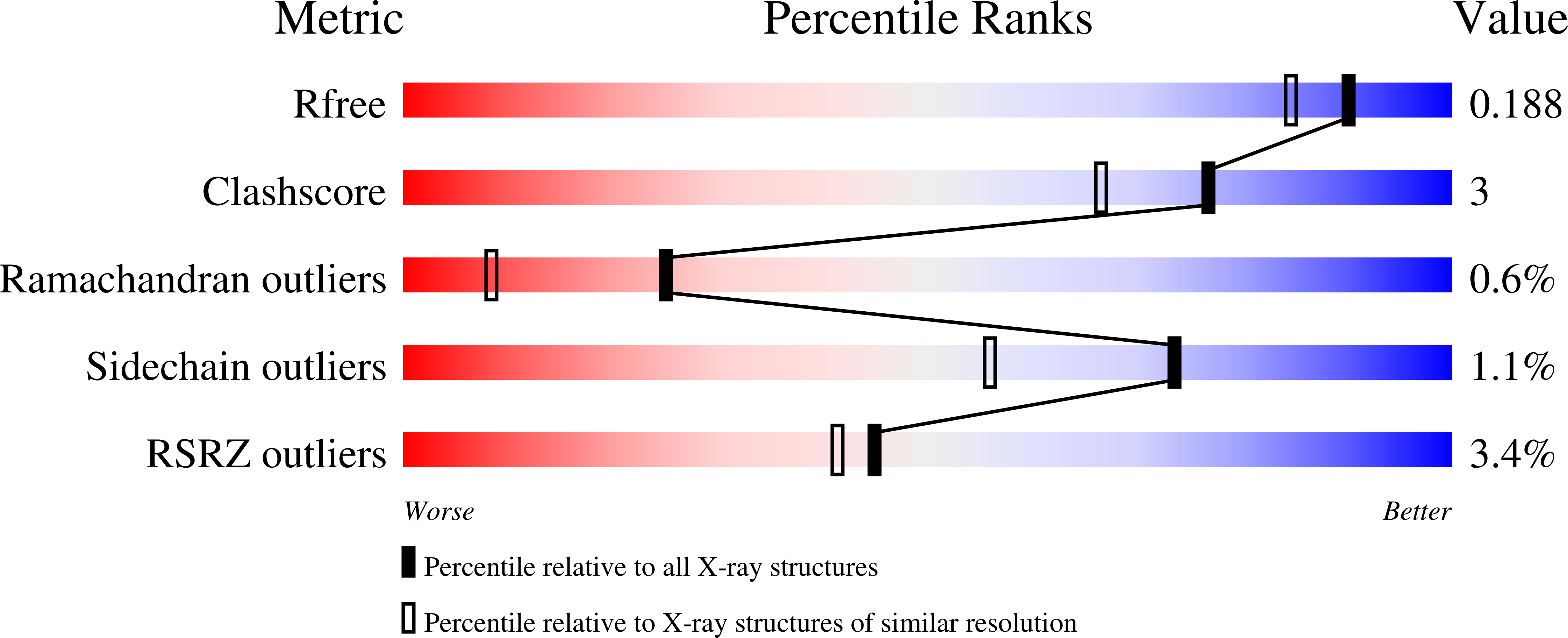NleH defines a new family of bacterial effector kinases.
Grishin, A.M., Cherney, M., Anderson, D.H., Phanse, S., Babu, M., Cygler, M.(2014) Structure 22: 250-259
- PubMed: 24373767
- DOI: https://doi.org/10.1016/j.str.2013.11.006
- Primary Citation of Related Structures:
4LRJ, 4LRK - PubMed Abstract:
Upon host cell infection, pathogenic Escherichia coli hijacks host cellular processes with the help of 20-60 secreted effector proteins that subvert cellular processes to create an environment conducive to bacterial survival. The NleH effector kinases manipulate the NF-κB pathway and prevent apoptosis. They show low sequence similarity to human regulatory kinases and contain two domains, the N-terminal, likely intrinsically unfolded, and a C-terminal kinase-like domain. We show that these effectors autophosphorylate on sites located predominantly in the N-terminal segment. The kinase domain displays a minimal kinase fold, but lacks an activation loop and the GHI subdomain. Nevertheless, all catalytically important residues are conserved. ATP binding proceeds with minimal structural rearrangements. The NleH structure is the first for the bacterial effector kinases family. NleHs and their homologous effector kinases form a new kinase family within the cluster of eukaryotic-like kinases that includes also Rio, Bud32, and KdoK families.
Organizational Affiliation:
Department of Biochemistry, University of Saskatchewan, 107 Wiggins Road, Saskatoon, SK S7N 5E5, Canada. Electronic address: andrey.grishin@usask.ca.
















